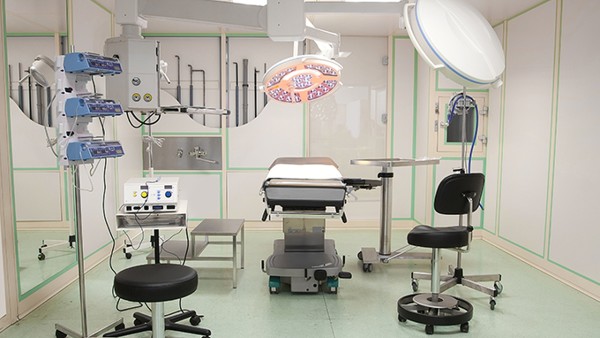Water birth: What you need to know

Water birth should be different for each person
Water birth is a type of childbirth that takes place in a pool or tub of warm water. It is becoming increasingly popular as an alternative to traditional hospital births. There are many potential benefits to water birth, including reduced pain, shorter labor, and a more relaxed and natural experience. However, it is also important to be aware of the risks of water birth, such as infection and cord prolapse.
If you are considering a water birth, it is important to talk to your doctor or midwife to discuss the risks and benefits. They can help you decide if water birth is right for you.
The benefits of water birth
There are many potential benefits to water birth, including:
Reduced pain: The warm water can help to relax the muscles and reduce pain during labor.
Shorter labor: The buoyancy of the water can help to reduce the pressure on the cervix and allow it to dilate more quickly.
A more relaxed and natural experience: Many women find that water birth is a more relaxed and natural experience than traditional hospital births. The warm water can help to create a calming and soothing environment.
Improved bonding between mother and baby: The skin-to-skin contact that is possible during water birth can help to promote bonding between mother and baby.
Reduced risk of tearing: The warm water can help to soften the tissues and reduce the risk of tearing during delivery.
The risks of water birth
There are also some risks associated with water birth, including:
Infection: The warm water can create an environment that is conducive to bacterial growth. It is important to use a clean pool or tub and to follow the instructions of your doctor or midwife to minimize the risk of infection.
Cord prolapse: This is a rare but serious complication that can occur during water birth. It occurs when the umbilical cord comes out of the vagina before the baby is born. This can cut off the baby's oxygen supply and lead to serious health problems.
Drowning: This is a very rare but potentially fatal complication that can occur during water birth. It is important to have a trained assistant present to help you during labor and delivery.
Who should not have a water birth?
Water birth is not right for everyone. You should not have a water birth if you have any of the following conditions:
A high-risk pregnancy
A history of preeclampsia or eclampsia
A history of placental abruption
A history of uterine rupture
A history of vaginal bleeding during pregnancy
Active herpes simplex virus infection
A fever
A skin infection
How to prepare for a water birth
If you are planning to have a water birth, there are a few things you can do to prepare:
Talk to your doctor or midwife: Discuss the risks and benefits of water birth with your doctor or midwife. They can help you decide if water birth is right for you.
Find a qualified water birth provider: Look for a water birth provider who is experienced and certified. They can help you create a safe and comfortable environment for your water birth.
Take a water birth class: This class can teach you about the benefits and risks of water birth, as well as how to labor and deliver in water.
Prepare your pool or tub: Make sure that your pool or tub is clean and filled with warm water. You may also want to add some essential oils or herbs to the water to create a relaxing environment.
What to expect during a water birth
When you arrive at the birthing center or hospital, you will be shown to a room with a pool or tub. You will be given a gown to wear and you will be asked to remove any jewelry or clothing that could get in the way.
Once you are in the pool or tub, you can relax and start to labor. Your doctor or midwife will be there to monitor your progress and provide support.
As you labor, the warm water will help to relax your muscles and reduce pain. You may also experience some buoyancy, which can help to reduce the pressure on your cervix and allow it to dilate more quickly.
When it is time to deliver your baby, you can choose to stay in the pool or tub or to move to a bed. If you choose to stay in the water, your doctor or midwife will help you to deliver your baby into the water.
After your baby is born, you can hold them in the water or take them out of the water and swaddle them. You can then spend some time bonding with your baby in the water before getting out of the pool or tub.
Recovery after a water birth
Recovery after a water birth is similar to recovery after a traditional hospital birth. You may experience some vaginal soreness or bleeding, but this should subside within a few days. You may also experience some fatigue, but this should also improve within a few days.
It is important to follow your doctor's or midwife's instructions for postpartum care. This may include taking pain medication, resting, and avoiding strenuous activity.
Water birth is a safe and effective alternative to traditional hospital births
Water birth is a safe and effective alternative to traditional hospital births. It can offer many benefits, including reduced pain, shorter labor, and a more relaxed and natural experience. However, it is important to be aware of the risks of water birth and to discuss them with your doctor or midwife before making a decision about whether or not to have a water birth.
The above is all the content that the editor wants to share with you. I sincerely hope that these contents can bring some help to your life and health, and I also wish that your life will be happier and happier.
Topic: #should #be #water- • Men preparing for pregnancy should take a look at expert advice
- • Pregnant women should maintain adequate nutrition
- • 5 things you should pay attention to to prevent prostate cancer
- • Syphilis patients should pay attention to three key points to avoid transmission
- • Men over fifty should not forget to have their prostate checked














